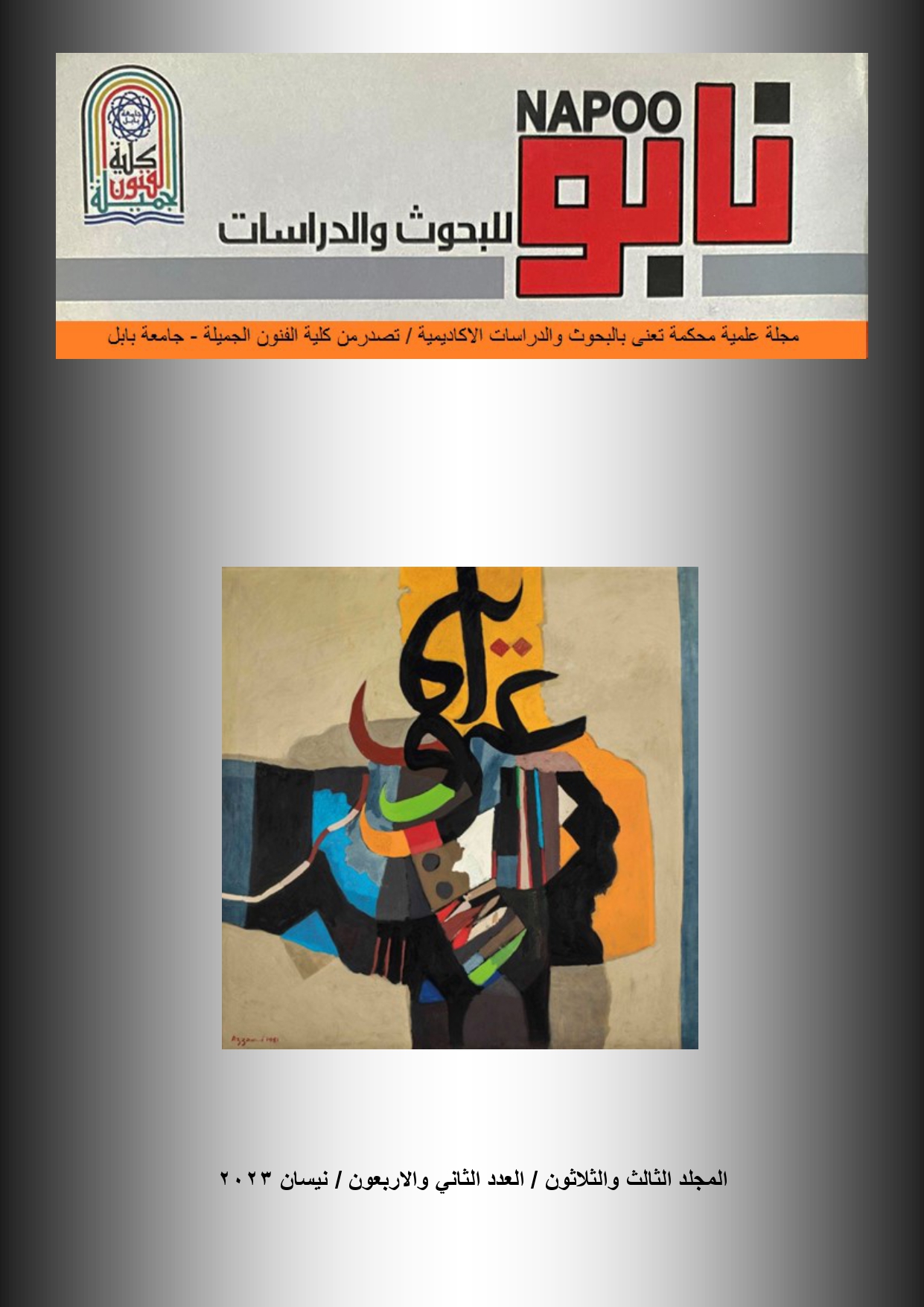The aesthetics of employing organic forms in the pottery of Annette Corcoran
Abstract
Research Summary
The current research (the aesthetics of using organic forms in contemporary ceramics) studies how nature affects the formation of the artist's artistic image, and how to employ it in constructing the artwork, through how the artist perceives the components of the artist's mental image. These forms and how they are formed in his imagination, including mental, structural and artistic features. In addition to its sensual image, the employment of such works of art depends on formulating the organic pattern of natural forms and giving the artistic image a conceptual dimension on the one hand, and on the other hand to show the power of nature over the entity. And that the artwork is an integral part and does not differ from the real reality, taking advantage of the influence of the environment on the recipient through its sensory structure and its combinations with mental abilities and how to form sensory impressions of the artist.
Based on the nature of the subject of the study, the research was divided into four chapters, the first chapter of which included the research problem, its importance and the need for it, and the research objective (the aesthetics of using organic forms in contemporary ceramics). The chapter also included the time limits (2000 - 2022) for contemporary ceramics. done in the world, and also included identifying the most important search terms. The second chapter dealt with the theoretical framework and previous studies. It consisted of three sections. The first topic included (beauty in modern and contemporary philosophical thought), while the second topic dealt with (mechanisms of employing organic forms in contemporary art), and the third topic provided an explanation of (the diversity of organic forms applied in contemporary ceramics). The chapter ended with indicators of the theoretical framework and previous studies. The third chapter included the research procedures, as it included the framework of the research community, which amounted to (145) models, from which a sample was extracted in an intentional way. The limits of the research by adopting the descriptive approach to analyze the research sample.
The fourth chapter included the results, their discussion, research conclusions, recommendations and suggestions that expressed ideas and contents based on aesthetic applications to employ organic forms in contemporary ceramics. Among the most important findings of the researcher:
1- Contemporary international ceramics employed an imaginative expressive vision to achieve aesthetic values.
2- The contemporary international potter emphasized the activation of organic forms that express the expressive energies mixed with truth and imagination in the structure of the ceramic work and the aesthetic expression of the ceramic work.
The research also included conclusions that were built on the basis of the results, the most important of which are:
1- The results of the research showed that the aesthetic, expressive and organic values preferred by potters are their reliance on the multiplicity of colors to facilitate the reading of organic shapes through them.
2- Contemporary international potters based on structural elements (color, texture, line, and movement), to present works with a diverse structural thought for ceramic work.




